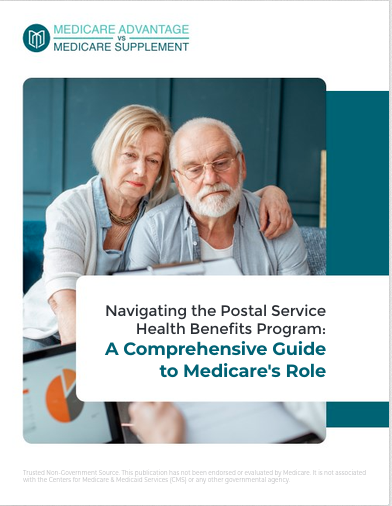Key Takeaways:
-
Checking your medications against a plan’s formulary is essential to ensuring your prescriptions are covered under the Medicare Part D plan you choose.
-
Careful research and planning can prevent surprises and help you avoid unexpected out-of-pocket costs during the year.
Understanding Medicare Part D and Prescription Coverage
Medicare Part D plans provide coverage for prescription drugs, but not all plans are the same. Each plan has a unique formulary—a list of medications it covers. The formulary can significantly impact your costs and access to the drugs you need. Before enrolling or renewing, understanding how these formularies work and comparing your options can save you time and money.
What Is a Formulary and Why It Matters
A formulary is a categorized list of medications covered by a Part D plan. Medications are placed into tiers, with each tier representing different cost levels. This tiered structure directly affects your out-of-pocket expenses:
1. Generic Medications (Tier 1)
-
These are usually the least expensive medications and are commonly covered by all plans.
2. Preferred Brand-Name Medications (Tier 2)
-
Costlier than generics but more affordable than non-preferred options, these drugs are widely used and often included.
3. Non-Preferred Brand-Name Medications (Tier 3)
-
These drugs are less commonly covered and come with higher costs.
4. Specialty Medications (Tier 4 or 5)
-
High-cost drugs for specific or rare conditions often require prior authorization or other restrictions.
The higher the tier, the more you’re likely to pay. Being aware of which tier your medications fall into will help you plan your budget and minimize surprises.
How to Check If Your Drugs Are Covered
Knowing if your prescriptions are included in a plan’s formulary is critical before you commit. Here’s how to check:
1. Use Medicare’s Plan Finder Tool
-
This online tool allows you to input your medications and compare plans based on which ones cover your drugs and at what cost.
2. Review Plan Formularies Directly
-
Once you’ve shortlisted a few plans, review their formularies to ensure your medications are covered. Pay attention to specific details like dosage and quantity limits.
3. Ask Your Pharmacist
-
Pharmacists can often provide insight into which plans offer the best coverage for your prescriptions.
4. Contact the Plan Directly
-
Reach out to the plan’s customer service team for clarification on drug coverage and potential restrictions.
Important Details to Watch For
Even if your medication is listed in a formulary, additional factors could impact your coverage or costs:
1. Quantity Limits
-
Some plans impose limits on how much of a medication you can receive at one time.
2. Prior Authorization
-
Certain drugs require approval from the plan before they will be covered.
3. Step Therapy
-
Plans may require you to try a lower-cost alternative before covering a more expensive drug.
Understanding these restrictions in advance can help you avoid unexpected delays or denials at the pharmacy.
Comparing Costs Beyond the Premium
While premiums are often a key factor when choosing a Part D plan, they don’t tell the whole story. Other costs to consider include:
1. Deductibles
-
In 2025, the maximum deductible for Part D plans is $590. Some plans waive the deductible for Tier 1 drugs.
2. Copayments and Coinsurance
-
Lower-tier medications usually have fixed copayments, while higher-tier drugs may require coinsurance, where you pay a percentage of the drug’s cost.
3. Coverage Gap (Donut Hole)
-
After you and your plan spend $5,030 on drugs in 2025, you enter the coverage gap, or donut hole. In this phase, you’ll pay 25% of drug costs until your total out-of-pocket spending reaches $2,000.
4. Catastrophic Coverage
-
Once you hit the out-of-pocket maximum, your costs drop significantly for the remainder of the year.
Comparing these factors across plans ensures you choose one that aligns with your medication needs and budget.
Strategies to Ensure Coverage
To maximize your benefits and avoid surprises, consider these strategies:
1. Make a List of Your Medications
-
Include all prescriptions, their dosages, and frequencies. This will make it easier to check against plan formularies.
2. Consult Your Doctor
-
If a medication isn’t covered, your doctor may be able to prescribe an alternative or help you request a formulary exception.
3. Review Plans Annually
-
Formularies and costs can change from year to year. During the Annual Enrollment Period (October 15 to December 7), compare plans to ensure your current one still meets your needs.
4. Leverage Generic Medications
-
Generic drugs are typically less expensive and more widely covered. Ask your doctor if a generic version of your medication is available.
5. Utilize Preferred Pharmacies
-
Many plans have preferred pharmacy networks where you can get your medications at lower costs.
Understanding Formulary Exceptions
If a plan doesn’t cover a medication you need, you can request a formulary exception. Here’s how the process works:
1. Initiate the Request
-
Contact your plan to start the exception process. Your doctor will need to provide medical documentation supporting the request.
2. Plan Review
-
The plan will review your request and determine whether the drug is medically necessary and if alternatives have been tried.
3. Appeals Process
-
If your request is denied, you can appeal the decision. Be prepared to provide additional documentation and work closely with your doctor.
Formulary exceptions can take time, so it’s best to start the process early to avoid delays in accessing your medication.
Using Medicare’s Extra Help Program
For beneficiaries with limited income and resources, Medicare’s Extra Help program can make prescription drugs more affordable. This program reduces premiums, deductibles, and copayments and may eliminate the donut hole entirely. If you think you qualify, applying for Extra Help can significantly ease your financial burden.
Preparing for 2025 Changes in Medicare Part D
The introduction of a $2,000 out-of-pocket cap in 2025 is a significant improvement for beneficiaries. Once you reach this limit, you won’t pay more for covered medications for the rest of the year. While this change provides relief, it’s still essential to choose a plan with a formulary that meets your needs.
Additionally, policies expanding coverage for specific drug categories, like weight-loss medications, may impact formularies and costs. Staying informed about these changes will help you maximize your benefits.
Common Mistakes to Avoid
Choosing the wrong Part D plan can lead to unnecessary expenses and stress. Avoid these pitfalls:
1. Ignoring the Formulary
-
Assuming your medications are covered can be costly. Always check the formulary before enrolling.
2. Focusing Only on Premiums
-
A low premium might come with high out-of-pocket costs. Consider the total cost of coverage.
3. Overlooking Pharmacy Networks
-
Using an out-of-network pharmacy can result in higher costs or denied claims.
4. Skipping the Annual Review
-
Formularies change annually. Reviewing your plan during the Annual Enrollment Period ensures you’re getting the best coverage for your needs.
Making Informed Choices for Better Coverage
Ensuring your prescriptions are covered under the Medicare Part D plan you choose requires research and planning. By understanding formularies, comparing costs, and leveraging available resources, you can make an informed decision that meets your healthcare needs and budget.









